Lantana camara L.
| Etymology | Genus | Ancient Latin name for a Viburnum species |
|---|---|---|
| Species | From Kamara, a West Indian name | |
| Family | Verbenaceae | |
| Synonyms | - | |
| Common Names | Common Lantana, Kamara Lantana, Wild Sage | |
| Status | Exotic: Naturalised | |
| Form | Shrub | |
| Native Distribution | Mexico, Caribbean, Central America, Venezuela, Colombia | |
Diagnostics:
Lantana camara is a naturalised shrub now commonly found in unmanaged areas. It has showy flowers that where the colour changes with age, usually from yellow or orange to pink, white or red depending on the variety. The leaves are thin and has prominent tertiary veins, and have serrated margins. The branches come in recurved hooks.
Interesting Facts:
The Common Lantana has been cultivated for over 300 years and comes in a large assortment of up to 650 varieties in 60 countries (Global Invasive Species Database, 2018).
It has survived and propagated successfully here and in many countries because of its attractiveness as a nectar plant that enhanced its pollination, as well as berry-like fruits that are eaten and dispersed by birds. It is considered an invasive species in many places because it may form thickets, crowding out the regeneration of forests (Global Invasive Species Database, 2018). It also has an ability to secrete chemicals at the roots which inhibit the germination, growth and metabolism of surrounding plants (Mishra, 2015).
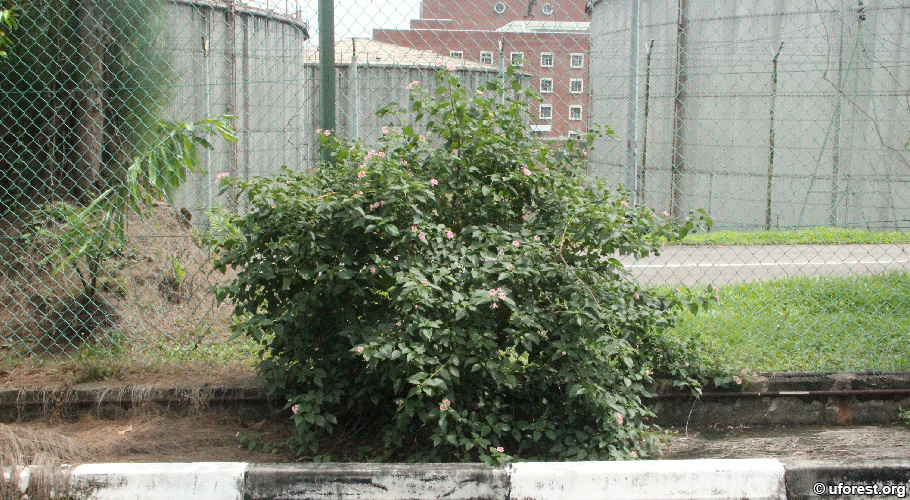
A big shrub growing at an unmanaged carpark.
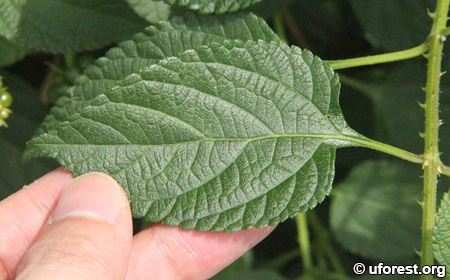
Leaf.
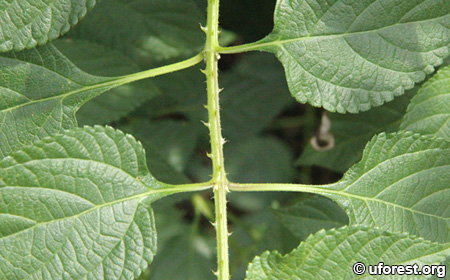
Spiny stem.
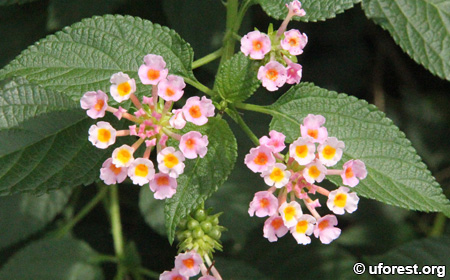
Inflorescence.
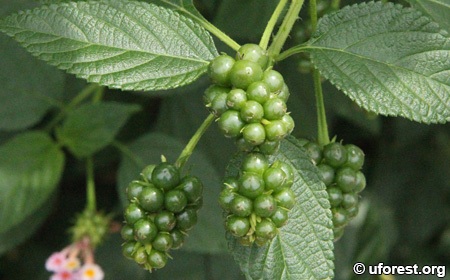
Unripe fruits.
References
Global Invasive Species Database (2018) Species profile: Lantana camara. http://www.iucngisd.org/gisd/ Accessed on 9-Dec-2018.
Mishra (2015) Allelopathic properties of Lantana camara. International Research Journal of Basic and Clinical Studies, 3(1): 13-28.
Author: Siyang
Posted: 2018-12-10